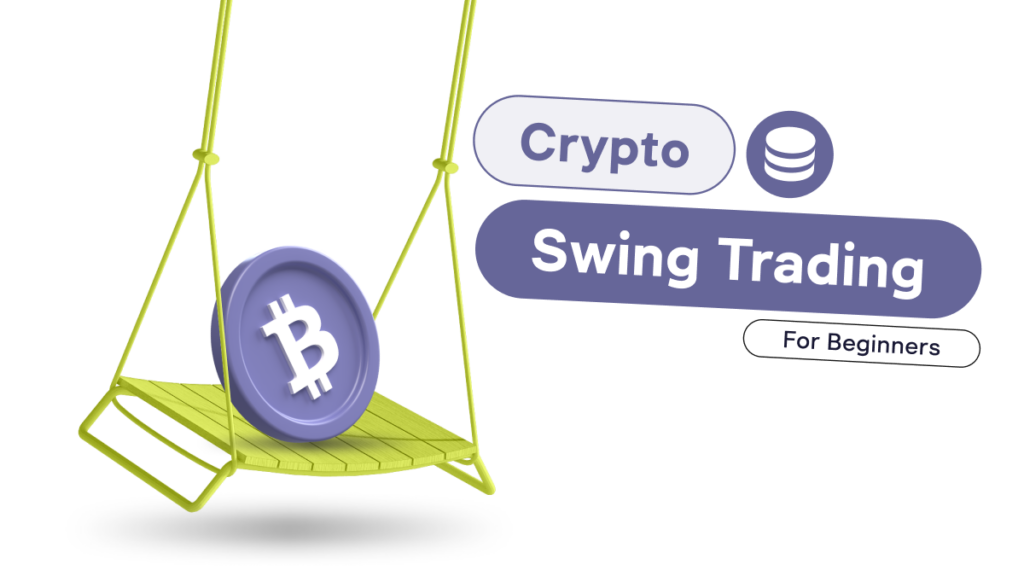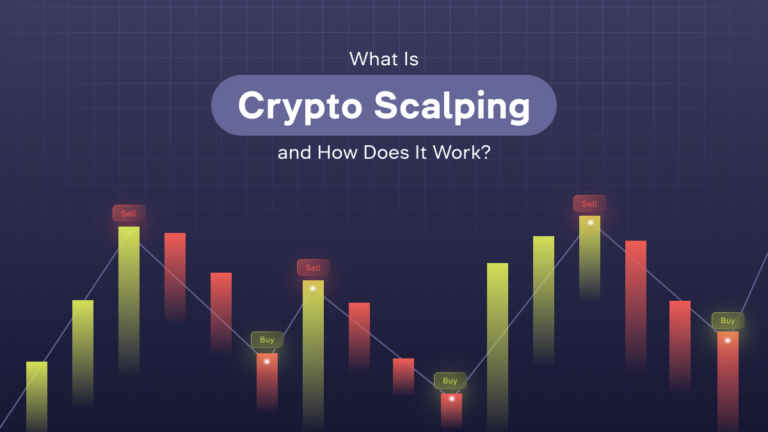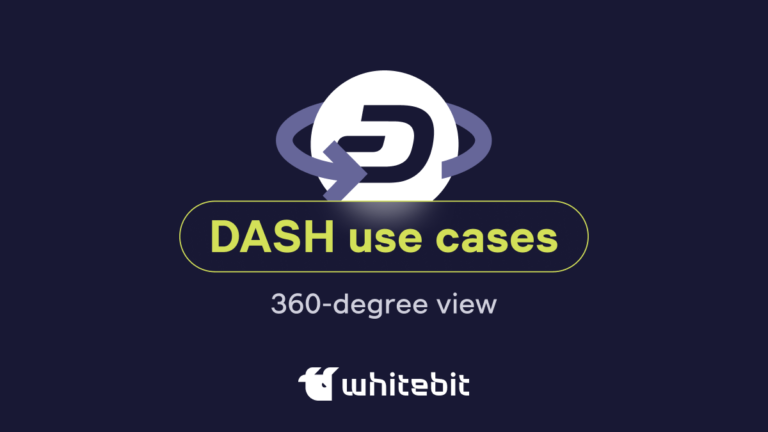Crypto Swing Trading For Beginners

Content
Successful traders seek ways to profit from every movement in the ever-changing cryptocurrency market. Swing trading offers this opportunity to capture short — and medium-term trends for profit. This article will explore swing trading techniques, how to apply them in practice, analyze market signals, and manage risks to achieve consistent results.
What Is Swing Trading Strategy In Simple Words?
Swing trading is a trading style in which positions are held for several days or weeks to profit from short-term market fluctuations. Simply put, swing trading is a hybrid of day trading and long-term investing.
Imagine cryptocurrency prices constantly fluctuating like waves. Swing traders attempt to “catch” these waves by buying when prices are relatively low and selling when they rise. The main goal of swing trading is to take advantage of short-term opportunities to generate profit while avoiding prolonged market risks. This makes swing trading appealing to those who want to participate in the market actively, but need more time or desire to engage in intraday trading.
How To Do Swing Trading Guide On Crypto Exchange?
- Learn Swing Trading Basics: Before starting, familiarize yourself with how the cryptocurrency market works and the fundamentals of trading by studying technical analysis, price movement patterns, and best indicators for swing trading.
- Choose and Register on a Reliable Crypto Exchange: The exchange should have all the necessary trading tools and be secure. For example, the crypto exchange WhiteBIT has been audited by the leading cybersecurity service provider Hacken.io and holds a top position in the CER.live certification platform with the highest AAA rating.
- Use a Demo Account for Practice: Before trading with real funds, you can use a demo account to test your strategy. This will help you understand the market and improve your skills without the risk of losing money.
- Fund Your Account and Develop a Trading Strategy: Define your goals, risk management, and best swing trading strategy using indicators for swing trading like moving averages, RSI, or MACD. Then, deposit funds into your trading account.
If you want to test multiple strategies simultaneously, use WhiteBIT Sub-Accounts. They allow you to create up to 10 additional accounts for testing different trading strategies, while the assets in the Main account remain untouched. WhiteBIT subaccounts offer all the benefits of the Main account, including fee discounts and bonuses.
Best Time Frame For Swing Trading
For swing trading in crypto, timeframes ranging from 1 hour to 1 day are most commonly used. Traders choose these timeframes because they allow for capturing significant price movements over several days or weeks. The 1-hour timeframes help identify short-term trends and entry points, while daily charts provide an overall picture of market conditions and confirm long-term trends. This approach allows traders to make the most of market fluctuations to generate profits.
Risks Management
Swing trading risk management is a key element of success. It is important to remember that any trade, no matter how promising it looks, can result in losses. Here are some fundamental aspects of risk management:
- Determining Risk Level: Decide what percentage of your capital you will risk on each trade. This will help minimize losses and preserve most of your capital even in failure.
- Setting a Stop Loss: Always use Stop-Loss Orders to limit potential losses. A Stop Loss is an order to sell an asset if its price reaches a certain level, thereby protecting the trader from significant losses.
- Diversification: The general rule of risk management in swing trading is not to risk more than 1-2% of your total trading capital on a single trade. Additionally, you can open positions in different cryptocurrencies or different market directions.
- Analyzing and Reviewing Strategy: Regularly analyze your trades and review your strategy. Keep a trading journal and adjust your approach to trading.
- Emotional Control: Trade rationally, avoiding impulsive decisions based on emotions. Adhere to your strategy swing trading and do not let fear and greed influence your trading.
Swing Trading Tools
Swing trading with technical analysis has its tools, and successful swing trading crypto is impossible without them. They help make informed decisions, determine optimal entry and exit points, and manage risks. Let’s look at the leading indicators.
Indicators
- Moving Averages (MA): Simple (SMA) and exponential (EMA) moving averages help smooth out price data and identify trends. Short-term MAs (e.g., 10-day) respond faster to price changes, while long-term MAs (e.g., 50-day) show more long-term trends.
- Relative Strength Index (RSI): The RSI measures the speed and change of price movements and helps determine whether an asset is overbought (values above 70) or oversold (values below 30). This can signal a potential trend reversal.
- MACD (Moving Average Convergence Divergence): The convergence/divergence of moving averages shows the relationship between two moving averages and helps identify crossover points, indicating possible entry or exit points.
- Bollinger Bands: These bands are plotted based on a moving average and show levels of volatility. When the price moves outside the bands, it can signal that the asset is oversold or overbought.
Support and Resistance Levels
Support level crypto are key concept in swing trading technical analysis. They help determine possible trend reversal points:
- Support: This is a price level at which demand is strong enough to prevent further decline. It is a level where the price of crypto tends to stop and reverse upward.
- Resistance is a price level at which supply is strong enough to prevent a further rise. At this level, the price tends to stop and reverse downward.
Patterns
Technical analysis patterns help traders identify potential entry and exit points in the market:
- Head and Shoulders: These swing trading chart patterns indicate a possible trend reversal and consist of three peaks: a higher middle peak (head) and two smaller peaks on either side (shoulders).
- Double Top and Double Bottom: These swing trading patterns signal a trend reversal. A double top forms after an uptrend and suggests a possible decline, while a double bottom forms after a downtrend and suggests a potential rise.
- Triangles: Patterns such as symmetrical, ascending, and descending triangles indicate a period of consolidation followed by an expected breakout.
Wave Analysis
- Elliott Waves: The theory asserts that the market moves in predictable waves: five waves in the direction of the primary trend (impulse waves) and three waves against the main trend (corrective waves). This helps traders forecast future price movements based on wave structure.
- Fibonacci Retracement: Used in wave analysis to identify correction levels and potential reversal points. Key Fibonacci levels include 23.6%, 38.2%, 50%, 61.8%, and 78.6%. Swing trading with Fibonacci retracements helps determine the extent to which a price may retrace before continuing the trend, which is particularly useful for swing traders in setting Stop-Loss and Take-Profit orders.
Swing Trading vs Day Trading
Let’s explore the difference between day trading and swing trading:
| Criterion | Swing Trading | Day Trading |
| Time Horizon | Several days or weeks | Trades within a single day |
| Trade Frequency | Low (fewer trades) | High (many trades) |
| Risk/Reward | Moderate risk and reward | High risk and potential high reward |
| Volatility | Moderate | High |
| Trading Costs | Lower (fewer commissions and transactions) | Higher (more commissions and transactions) |
| Suitable For | Hobby traders with limited time | Professional traders with ample time |
Swing vs day trading rely on technical analysis but differ in their approaches. Day traders work with short time frames, quickly reacting to market changes, whereas swing traders prefer longer intervals and moderate volatility. Day trading incurs higher commission costs due to frequent trades, while swing trade crypto is more cost-effective. Swing trading suits those who cannot constantly monitor the market, whereas day trading requires full engagement. It is also important to note that swing trading cryptocurrency demands less time for learning than day trading, which requires a deep understanding of the market and significant experience.
Pros and Cons of Swing Trading
Benefits of Swing Trading
Swing trading does not require constant market monitoring, making it ideal for traders with limited time. Lower commission costs reduce expenses. This crypto swing trading strategy offers moderate risk and reward, allowing traders to profit from short-term fluctuations without the high risks associated with day trading. Additionally, swing trading is suitable for beginner traders as it requires less learning time and provides an opportunity to grasp trading without constant involvement.
Disadvantages of Swing Trading
However, swing trading also has its drawbacks. Due to more extended time frames, traders might miss out on quick price movements and short-term opportunities. Holding positions for extended periods can cause emotional stress. Fewer trades may limit overall profits compared to more active trading strategies. Moreover, successful swing trading requires deep technical analysis to identify trends and determine entry and exit points.
Conclusion
Swing trading is an effective strategy for profiting from short-term market fluctuations, combining moderate risk with reasonable time use. It suits novice traders and those who cannot constantly monitor the market. For successful implementation, it is essential to carefully analyze the market, find the best strategy for swing trading, use technical indicators such as moving averages and RSI, set Stop Loss for swing trading orders to minimize losses, diversify trades, and regularly review your strategy. If you’re ready to explore how to swing trade crypto in practice, open a list of cryptocurrencies and choose suitable assets for trading!











